The hot beverages market is changing and retailers need to ensure their displays reflect that. Aidan Fortune gets the latest merchandising advice
Customers making a beeline to the hot beverages shelf should be a welcome sight for retailers. According to the HIM Convenience Tracking Programme, a shopper buying hot beverages will have an average of 4.6 items in their basket compared with a regular shopper’s 2.7.
Not only that, these shoppers will spend an average of £8.52 (on top of the hot beverage product) in a store, rather than the £5.31 other shoppers will spend.
17%
That’s the percentage of shoppers who think their local store doesn’t sell hot beverages, according to HIM
While they may not be given the largest amount of space in a store, hot beverages obviously generate sales, so are retailers using their hot beverages fixtures to its full potential?
Nestlé UK trade communications manager Graham Walker thinks not and believes that there is a massive opportunity for retailers to earn more from the category. “There is great potential in hot beverages, which is growing at 1.3% in convenience stores (IRI Total Convenience 52 weeks ending March 26, 2011),” he says. “Since 17% of shoppers do not think their local store sells hot beverages (HIM research), it is particularly important that retailers are fully aware of the opportunities available to them.”
He adds that the main stumbling block preventing retailers from capitalising on the category is merchandising and placement in store. “Consumers are often confronted with a confusing hot beverages fixture, particularly in the convenience channel, and the category can be hard to find in stores, leading shoppers to perceive there to be low availability of stock,” says Walker. “The instant coffee range that is stocked is often inconsistent.”
Mahmood Anwer, who runs Kirkwood Village Store in Coatbridge, North Lanarkshire, recently overhauled his hot beverages category with some great results. “We find our customers are those who have forgotten something from their supermarket shop so they are usually in a hurry, and speed is of the essence,” he explains. “We decided to move our hot beverages next to the biscuits and made the display more eye-catching. Now our customers know exactly where to find them and we’ve seen a 5% increase in our sales as a consequence.”
The ethical path
Ethical sourcing is a key concern for consumers, and hot beverage manufacturers are leading the charge on this. At the end of last year Cadbury’s entire range of hot chocolate became Fairtrade, making it the largest hot chocolate brand to carry the Fairtrade mark.
Kraft Foods trade communications manager Susan Nash says that Fairtrade products perform well in the hot beverages sector. Cadbury’s Hot Chocolate saw a 7% year-on-year increase in sales (Nielsen MAT week ending January 1, 2011) and its entire portfolio is worth more than £40m.
Tetley’s customer marketing controller Simon Attfield says that while tea is one of the easiest categories to shop ethically, it’s important that retailers stock products that fall into this category. “Tetley, and many other brands, have always been ethical but have just been quiet about it,” he explains. “It’s not exactly a driver of sales, but it is expected by consumers.”
He adds that Tetley plans to introduce the Rainforest Alliance Certified logo across its entire range in the coming months.
Nash adds that the issue goes beyond ethical sourcing and that brands such as Kenco have looked to reduce packaging waste. “Shoppers are increasingly interested in reduced packaging and increased recyclability,” she says. “To help satisfy this, retailers should look to stock products with packaging that uses less material, weighs less and reduces impact on landfills, without compromising on food safety or freshness.
“Our Kenco Eco Refill pack launched in 2009, for example, has 97% less packaging weight per gram of coffee than the 100g and 200g jars.”
Kraft Foods UK trade communications manager Susan Nash says that retailers need to re-align their hot beverages section to suit the growth areas in the market. She cites the move towards premium coffees as a good example. “Convenience retailers should align themselves with the changing shape of the coffee market, taking advantage of the growing sectors and stocking leading brands that deliver on quality and taste,” she says. “Retailers should be looking to increase the space they allocate to best-selling premium brands and make the most of this upwards trend.”
Kraft helped keep its Kenco Pure brand fresh in consumers’ minds by undergoing a redesign earlier this year. The rest of the range is due to follow suit in the coming months. It has also introduced a limited-edition £2 pricemarked jar of Kenco 100g exclusively into the independent channel. All of its initiatives are being supported by a £11m marketing investment for the year, which includes a run of TV advertising.
Nash points out that retailers should also look out for sub-categories such as decaffeinated as potential areas for growth. “Decaffeinated coffee has accounted for £2.8m of sales in the impulse sector over the past 12 months (Nielsen Impulse MAT to week ending May 21, 2011),” she says. “It can provide a real sales opportunity for retailers and, as it is one of the smaller markets, those with limited space should aim to stock well-known brands that customers recognise as good quality.”
Walker urges retailers to think carefully about their display. “Place everyday coffee lower on the fixture where you can give it more space, improving availability,” he says. “This will also encourage shoppers to browse the fixture, trial new products and expand their repertoire.”
He adds: “Ensure super-premium is visible and place café-style coffee towards the middle of the fixture, as this will encourage cross-shopping of segments. Remember, 100g jars of soluble coffee are the core packs for convenience.”
John Sutcliffe, convenience sector manager at Taylors of Harrogate, which produces the Yorkshire Tea brand, says that retailers should display with a view to encouraging shoppers to trade up. “Retailers should always offer a range of products and pricing in all categories; a good-better-best approach will assist in developing different shopper demographics, improving footfall and encouraging consumers to trade up,” he says. “In the convenience market it is key to ensure that mainstream brands are supported with adequate shelf space to maintain good supply.”
For those retailers with limited space, Nash recommends clever category management. “Try to flex your space to fit key trends for example, by allocating extra space for premium coffee but if you have limited space, stock smartly with products that tick more than one trend, such as premium and ethically sourced,” she adds. “Retailers should also look to stock pricemarked packs to help give shoppers reassurance on price and show value for money.”
retailer’s viewRaj Chandegra
“The major brands are what drive people through the tea fixture and you cannot afford to allow a customer to leave your store disappointed because their favourite tea isn’t in stock.
“We always ensure the tea fixture is kept well merchandised, tidy and stocked up with all the major lines in addition to a selection of fruit and herbal teas, sales of which have grown by more than 40% in the past year.”
Raj Chandegra, Londis Barnes, London
Typhoo category manager Lynn Jefferies says that retailers need to break down their display to match category leaders. “In the total market both tea and instant coffee account for approximately 40% of sales each, with roast and ground coffee accounting for 11%, and hot chocolate and malted drinks accounting for the remaining 9%,” she says. “A tea display should primarily follow the current sales breakdown, but with an eye on those sectors that will drive future growth of the category. Black tea accounts for about 80% of sales in the impulse sector with a penetration of 79%, so this should dominate on shelf and be at eye level where possible.”
She adds: “While black tea will provide a destination for shoppers, when it comes to driving repertoire other segments such as decaf, green tea, fruit & herb infusions and speciality should be given space.”
She advises retailers to ensure they are always stocked up with the key brands. “The top three should be stocked, namely Tetley, PG and Typhoo,” she says. “The preferred pack size is 80s based on shelf space. However, 160s is the best-selling pack size in the market so, where possible, this should be listed for the best-selling brands.”
Tetley’s customer marketing controller Simon Attfield says that convenience store retailers need to change how shoppers view them in order to capitalise on the hot beverages category, and should be constantly reviewing local tastes. “Try not to be a distress purchase location tea drinkers are a loyal bunch and they will always look to buy their favourite brand,” he says. “They’ll only buy another brand as a last resort, but will look elsewhere next time. If you can stock the brands you know are popular with your customers, you’ll move from being a distress purchase store to a convenience location.”
top 10 Hot beverage SKUs in the convenience channel
1 Nescafé Original 100g
2 Tetley 80s
3 Nescafé Gold Blend 100g
4 Kenco Really Smooth 100g
5 PG Tips 80s
6 Cadbury’s Drinking Chocolate 250g
7 Nescafé Cappuccino Sachets 10s
8 Kenco Decaf 100g
9 Twinings Earl Grey Tea 40s
10 Carte Noire 100g Source: IRI Total Convenience 52 weeks March 26, 2011
Speciality tea brands
While the traditional cuppa has been the mainstay of British culture for decades, there could come a time in the not-so distant future when that won’t be the case and peppermint, blackcurrant or camomile will be the brew of choice.
According to Mintel, sales of herbal teas hit the £80m mark in 2010, up from £73m in 2009, and its market share stands at 11%. Mintel senior drinks analyst Jonny Forsyth says that a radical younger generation of tea drinkers represents a significant opportunity for store owners.
“Our consumer research identifies a younger tea drinking generation who differ markedly from previous generations of tea drinkers,” says Forsyth. “They have a much more adventurous attitude towards drinking tea, enjoying the variety of flitting between standard English breakfast, speciality and herbal tea rather than just sticking to one type; and they are keen to try new tea brands and flavours.
“What this translates to is a new generation growing up for whom the traditional cuppa is not the be all and end all,” he explains. “Their decision-making process when buying tea is much more conscious than with older generations. For example, many use different kinds of herbal tea dependent on their mood and will decide to have a cup of standard breakfast tea if in need of an energy booster.”
ones to watch…
Better for you
Aimia Foods has introduced an improved recipe for its Weight Watchers Hot Chocolate. Available in a 220g jar, the newly reformulated recipe is made with real chocolate and each serving contains only 40 calories. It is also free from artificial colours, flavours or preservatives. tel: 01942 408600
Go green
New from Tetley is a range of price-marked packs specifically for the convenience channel. Tetley Pure Green and Tetley Lemon Green come in cases of four x 20. They have been introduced to give independents a low-risk entry into alternative teas.
rrp: £1 tel: 020 8338 4367
Streets ahead
Percol Coffee is giving consumers the chance to try its product for free. As part of a £500,000 marketing campaign, the Percol Streets Ahead promotion will select households to receive free samples. Consumers can nominate their street at www.percolstreetsahead.co.uk. tel: 020 79785 300
The new ones
Johnny Vegas and Monkey made a return to TV screens recently to promote Unilever’s new range of PG Tips variants. The £3.5m marketing campaign was designed to highlight The Fresh One, The Strong One and The Delicate One, created for different tea-drinking moments. tel: 01293 648 000
Unilever Partners for Growth controller Tom Hazelden agrees that retailers have to move with the times. “Tea tastes have evolved in recent years, with many people introducing fruit & herbal, specialty or green tea into their repertoire,” he says. “A successful tea fixture should reflect these changes, with the best-selling lines proportional to store size and location.”
Attfield says that speciality lines such as green tea and Redbush are areas retailers are not fully capitalising on. To help combat this, Tetley embarked on a series of initiatives including a ‘Try Me Free’ promotion on Redbush and a 20-bag pack of Lemon Green teas specifically for the convenience channel.
“We’re trying to make it as easy as possible for the convenience store retailer,” says Attfield. “Speciality teas are where we see the major growth coming from, and we’re doing all we can to help make them habitual purchases. The 20-bag pack of Lemon Green is a great way for retailers to introduce the products to their customers with relatively little risk.”
Unilever has also made recent progress in the fruit and herbal teas sub-category. Earlier this year it launched two new variants to its Lipton Fruit & Herbal Infusions range. The new flavours, Citrus & Orange Blossom and Apple & Cinnamon, were supported by a £1.5m marketing campaign which included an official partner package with ITV show Britain’s Got Talent.
Perhaps now’s the time to put the kettle on and take time out to review your hot drinks fixture.






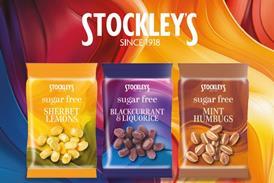









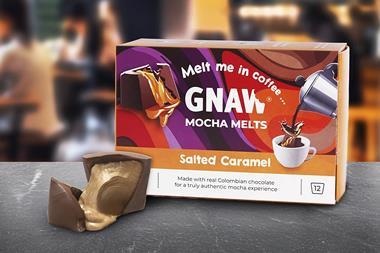

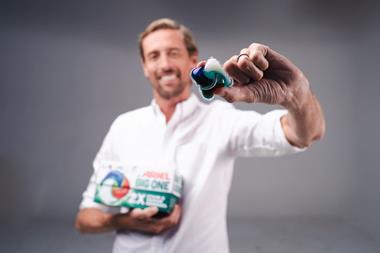
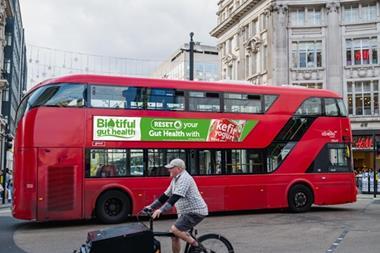

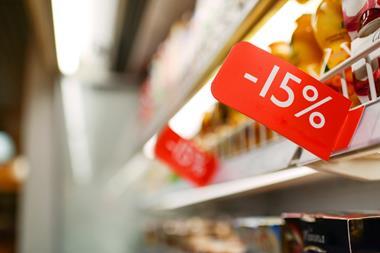

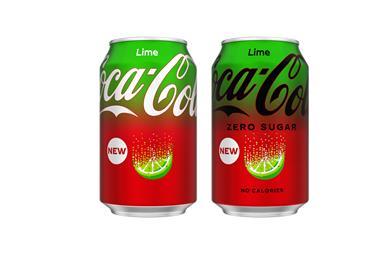

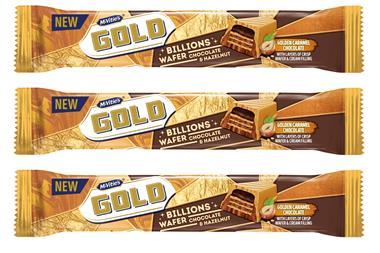

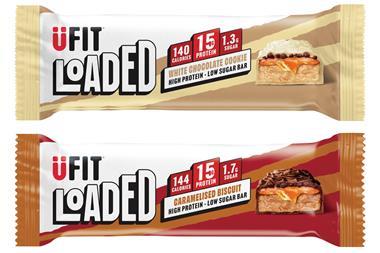
No comments yet